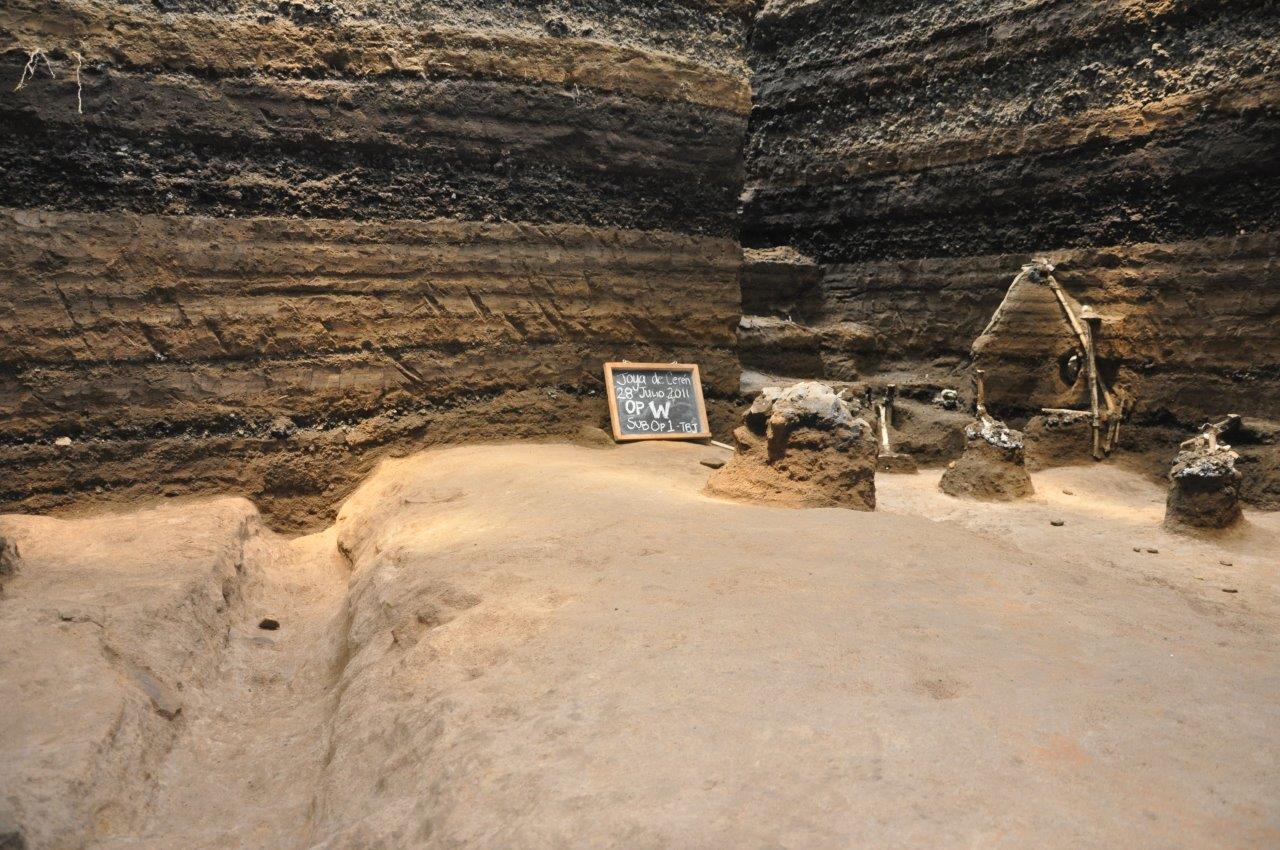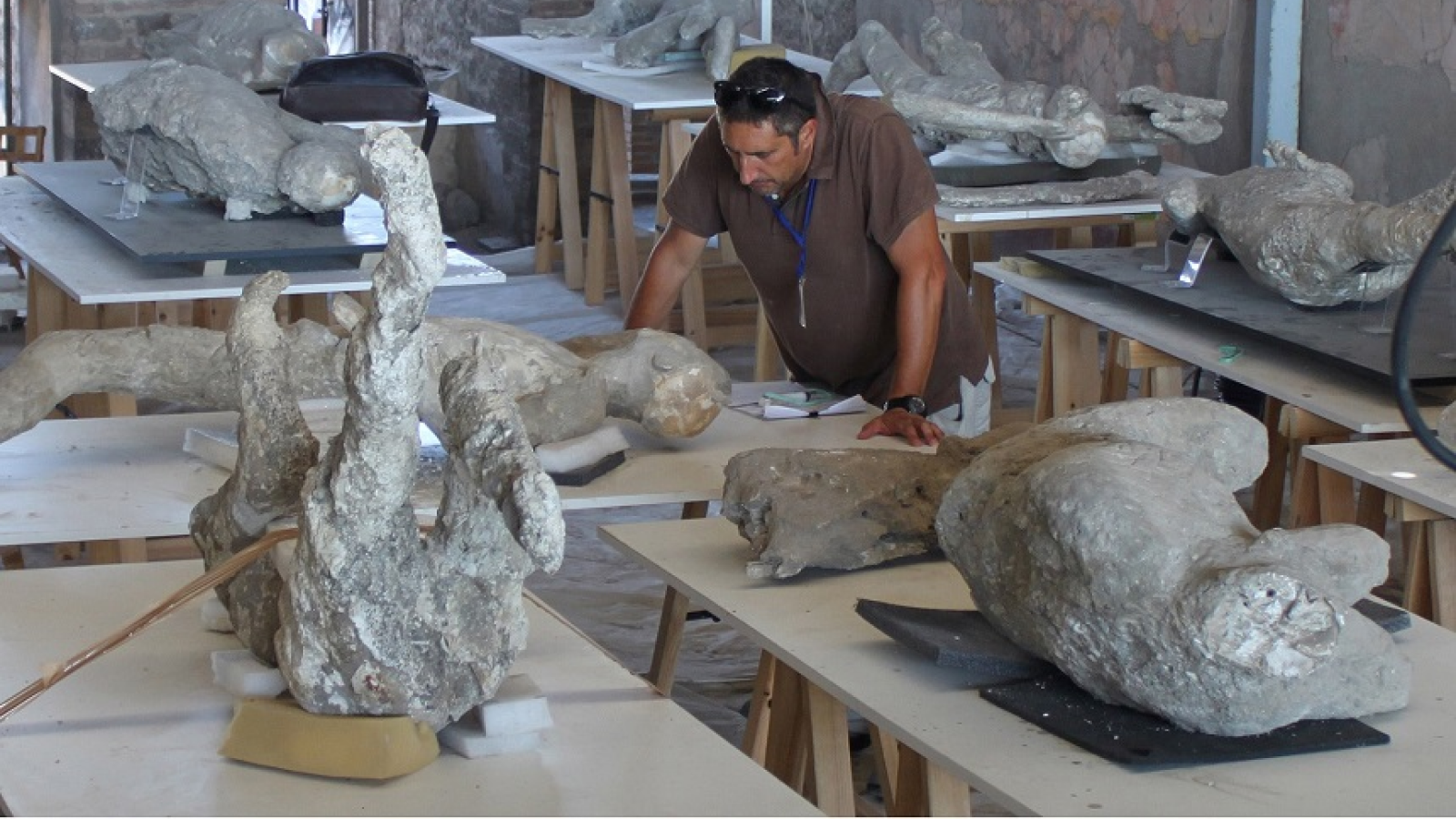'Pompeii of the New World' Reveals Power of Mayan Commoners

A Maya village frozen in time 1,400 years ago by a volcanic eruption reveals that commoners had power in a culture best known for the works of the elite class.
Though elites in city centers had an impressive record in developing arts, hieroglyphs and a complex calendar, rural villagers weren't under the thumb of this ruling class, excavations in El Salvador suggest. In fact, nearly all decisions appeared to be under local control, and villagers had a remarkable quality of life, said Payson Sheets, an archaeologist at the University of Colorado, Boulder.
"Each household had, for instance, a total of about 70 ceramic vessels," Sheets told Live Science. "I don't think we have that many pots and pans and vessels in our house." [Photos: Excavating a Mayan Village Frozen in Time]
Frozen village
In 1978, Sheets discovered Cerén, a village in what is now El Salvador that thrived during the Mayan Classic period (A.D. 250-900). During an archaeological survey of the region, Sheets spoke with a local man who mentioned buried buildings that had been uncovered by some local construction work. Sheets went to look. He saw the floor of a house and its collapsed thatch roof that a bulldozer had uncovered from beneath 16 feet (5 meters) of volcanic ash. Assuming the home had to be less than a century old — thatch doesn't last long in the El Salvadorian humidity — Sheets sent some thatch off to be radiocarbon dated. He was shocked to learn that the house was 1,400 years old.
Further excavations revealed an extraordinarily detailed tableau beneath the ash layer, so much so that the site has been called the "Pompeii of the New World." Fossilized imprints of the crops that were growing when the volcano erupted in the late 600s allowed the researchers to reconstruct agricultural fields. These hollowed-out impressions in the ash are so detailed that individual grains of maize are visible. Drip marks in the dirt reveal the outline of each building's eaves. A pair of pottery bowls shows the fingerprints of an adult and a child, perhaps marking a lesson in the craft. [See Photos of an Ancient Mayan Tomb]
"Every season, right before we start excavating at Cerén, I proclaim to all my graduate students and whatever professionals are there, 'OK, Cerén site, disappoint us,'" Sheets told Live Science. "And they say, 'Oh my god, you're gonna jinx us,' and I say, 'Nope. You'll see.'"
Get the world’s most fascinating discoveries delivered straight to your inbox.
The site has never disappointed, he said.
The advantage of all of this detail is that it gives a look into the daily life and decisions of Mayan villagers. Archaeology on the Maya civilization has focused on the activities of the elites, Sheets said, whereas the lives of commoners — the vast, silent majority — have been largely unknown. Many archaeologists, including Sheets, once thought of the commoners as a sort of exploited underclass, controlled by the wealthy and powerful. Cerén turned that idea upside down.
Local control
Instead, Mayan villagers called the shots for their own community, Sheets and his colleagues report in a new paper in the September issue of the journal Latin American Antiquity. Differences in artifacts from house to house reveal that individuals could decide the basic rhythms of their days, from when they did the dishes to whether they let the kids help make a pot. Households also had a great deal of discretion in deciding how to lay out their maize fields, when to weed and when to harvest.
Many households specialized in side projects. One of the homes excavated was surrounded by specialty crops (agave, cane, chili, cacao and cotton), which were probably bartered between households. Another made stone tools and cotton thread. Yet another home was an artist's den, where somebody painted gourd bowls.
Some households had village responsibilities that were more service-oriented. One home was attached to a community ceremonial building and had a special stone tool in the kitchen used for the ceremonial grinding of grain, suggesting the residents were responsible for maintaining that gathering place and spearheading ceremonial activities. Another house was attached to a dome-shaped sweat bath that could seat up to 12.
The village also featured a large building with two benches in the front room that was probably used as a sort of city council meeting place. Elders may have decided disputes and organized community affairs from this site.
One example of a communal project was likely the village sacbe (pronounced sock-bay), a wide road topped with crushed white limestone. Sacbes were ways to get from one place to another, but their width suggests they were also constructed with parades and processions in mind, Sheets said. The Cerén sacbe shows changes in construction every 16 to 23 feet (5 to 7 m), suggesting each household in the village had its own section of road to maintain. (Yes, the ancient Maya "adopted a highway.")
The canals on either side of the road were likely maintained more collectively, Sheets said, probably with village elders directing repairs.
End of Cerén
This local control may have benefited the residents of Cerén when the nearby Loma Caldera blew its top one August, in the midst of the rainy season. No bodies have been found in the village, suggesting that villagers had a little bit of time to get out before ash and poisonous gases started to fall, Sheets said. Their first warning was probably the ear-splitting shriek of steam screaming out of the volcano as magma hit surface water, turning it into gas.
"They got out," Sheets said of the villagers — as testament to their ability to self-organize. Footprints on the sacbe hint that people used the road to flee, though it's hard to tell for sure whether the tracks were laid down in the final exodus from the village. The cloud of ash and toxic gases from the volcano moved 60 mph (100 km/h), on average, Sheets said. So while the villagers escaped their town, it's not clear if they had enough warning to outrun the eruption in the end.
"As we work farther south, there's a good chance we will find bodies," Sheets said. "But maybe not."
Whatever the villagers' ultimate fates, they were far from powerless in life. Their major contact with the elites of the Maya society probably came when they visited nearby cities to get goods like jade and obsidian (a dark natural glass that forms when lava cools) in the marketplaces. Because there were multiple cities in the valley, commoners could "vote with their feet" and had control over which markets they frequented, Sheets said. Thus, the relationship between elites and commoners was more likely symbiotic than exploitative.
"The elites are not going out to the field, getting dirt under their fingernails producing food," Sheets said. "Elites are dependent on commoners for labor, for food, for firewood, for a whole lot of things."
Follow Stephanie Pappas on Twitterand Google+. Follow us @livescience, Facebook& Google+. Original article on Live Science.

Stephanie Pappas is a contributing writer for Live Science, covering topics ranging from geoscience to archaeology to the human brain and behavior. She was previously a senior writer for Live Science but is now a freelancer based in Denver, Colorado, and regularly contributes to Scientific American and The Monitor, the monthly magazine of the American Psychological Association. Stephanie received a bachelor's degree in psychology from the University of South Carolina and a graduate certificate in science communication from the University of California, Santa Cruz.



